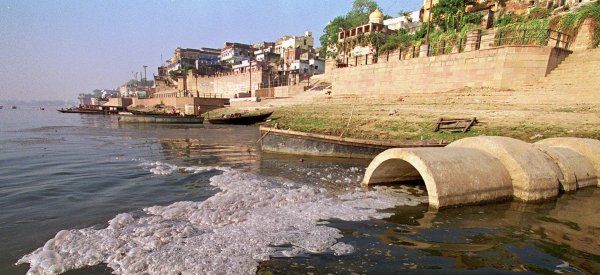Projects Approved for Total Sewage Treatment Along 4 Ganga Cities
Published on by Water Network Research, Official research team of The Water Network in Government
The National Mission for Clean Ganga has approved projects worth Rs 1,900 crore that will ensure hundred percent sewage treatment facility along four religious cities.
Those cities are Haridwar, Rishikesh, Varanasi and Allahabad.

The money will also be spent for ensuring sewage treatment facility in two cities – Vrindavan and Delhi – along Yamuna. With this, NMCG has approved projects worth more than Rs 4,100 crore during the last three months in Uttarakhand, Uttar Pradesh, Bihar, Jharkhand and Delhi.
In a review meeting last month, Prime Minister Narendra Modi had expressed unhappiness over slow pace of work related to Ganga cleaning. Union Water Resources Minister Uma Bharti has been on a two-week ‘Ganga Nirakshan’ yatra to assess the ground situation and interact with people.
The major chunk of nearly Rs 768 crore has been approved for sewage treatment in Allahabad. The projects would also arrest flowing waste water of 18 drains into the rivers to ensure pollution free water for bathing at Sangam during Ardh Kumbh mela 2019. Three projects wort RS 744 crore of sewage treatment infrastructure were approved for Patna, Bihar.
In Delhi, construction of as many as seven prioritized STPs of total capacity of 94 MLD in Najafgarh area have been approved at an estimated cost of Rs 344.81 crore under ‘Maily Se Nirmal Yamuna’ project that was initiated on the directions of National Green Tribunal (NGT). Najafgarh drain contributes around 70 percent of the total discharge of the city into river Yamuna that includes a lot of untreated sewage.
Read more: The New Indian Express
Media
Taxonomy
- River Studies
- Pollution
- River Engineering
- River Restoration
- Water Pollution Control
- Pollution
1 Comment
-
This is a promising development to help reduce the risk of waterborne illnesses including hookworm and gastroenteritis from exposure to harmful pathogens and microorganisms present in raw sewage. We kind of take for granted that all our sewage is properly treated, filtered and chlorinated prior to discharge to rivers or oceans here in United States. However clearly very different situation in developing countries like India. Just curious to know, what level of treatment will the sewage be undergoing prior to discharge? Primary? Advanced primary? Secondary, etc.?
That's very important info to know because if it's only advanced primary that really only reduces BOD by 50% and does not completely treat and remove all pathogens and microorganisms in the effluent that can still cause waterborne illnesses from exposure that can pose major public health risks? Also how will the wastewater treatment plant operators be trained and to what standards? All key info and details to ascertain prior to putting the plant online and making it operational.